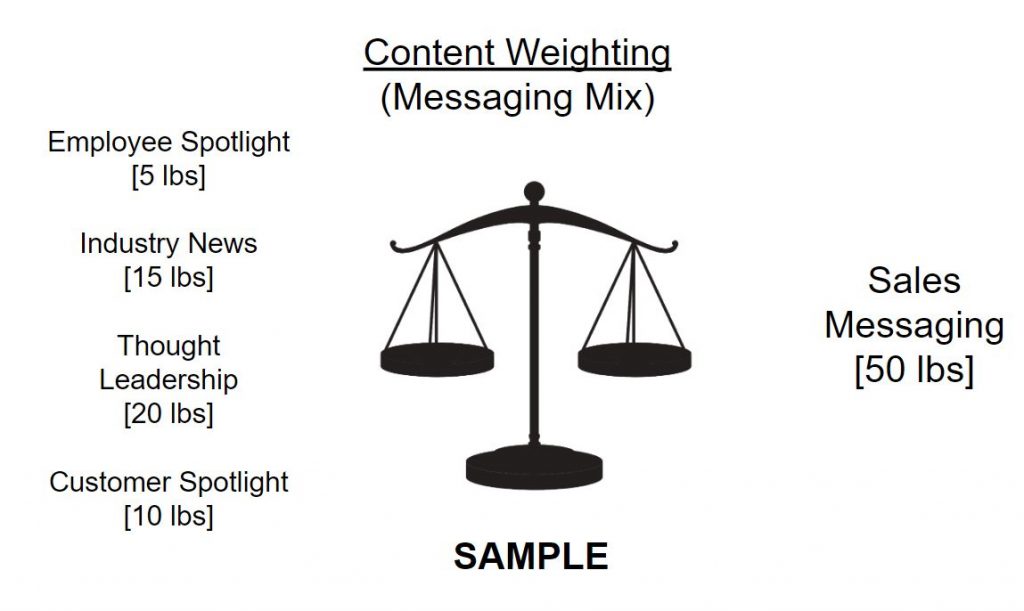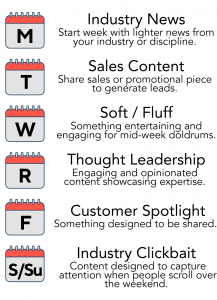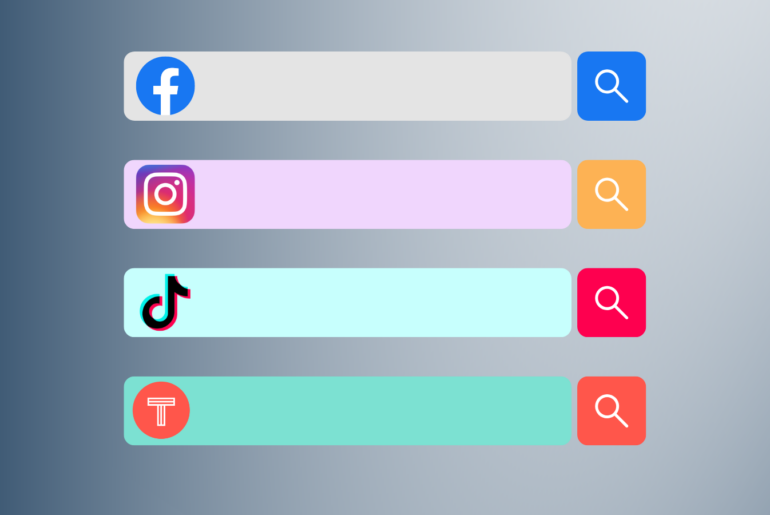Almost everyone has that friend who sells a network marketing product and has filled their social accounts to the brim with sales materials. As you click “unfollow”, you should ask the question: Are you doing the same thing with your brand’s social media?
Is your social media too heavy on sales?
Is your content a lot of fluff without gravitas?
Do you struggle to find the right mix?
It may be time to examine your content weighting strategy on social media.
Social Media Content Weighting Strategy is a balancing act. You need to drive engagement while still focusing on the bottom line. You need to generate goodwill with feel-good pieces even though there may not be a direct correlation to sales goals.
Integrated Marketing Communications (IMC) mix, we call it content weighting strategy, tends to be taught more on the Communications side of the house in Academia. Purdue has a great brief on IMC for the uninitiated or those who need a refresher. The core concept of IMC is the consideration that external communication tools, like social media, are not just tools for selling. They are tools to distribute a holistic story about the company, brand, or product.
Your content weighting strategy should include a mix of topics including:
- Thought Leadership
- Investor Relations
- Industry News
- Customer Spotlights
- Recruitment & Employee Relations
- Organizational Communications
- Sales Messaging
- Product Messaging
In large companies there are lots of departments to consider and an elaborate content weighting strategy is necessary to ensure that everyone’s needs are met. It is often a precarious balancing act. The marketing team will want to focus on their funnel. The sales team will want activity that immediately generates leads. The communications and public relations team will seek to tell stories that drive earned media and engagement. You’ll probably need a committee for this.
In smaller teams, it can be easier to set an editorial calendar that aligns your marketing and communications needs. It just takes discipline to stick to the content weighting strategy.
Regardless of your team size, the content weighting strategy should balance “heavier” sales messaging with “lighter” content to ensure that your audience is not turned away by a constant barrage of “BUY NOW”.
You can visualize the content weighting strategy as a scale. There is heavier messaging like Sales materials. These should be balanced out with lighter content like customer and employee spotlights or intermediate weight material like Thought Leadership and Industry commentary.

Try a Content-Type Calendar
For many teams, a content-type calendar can be effective when you’re limited in your ability to plan for an entire month in a single go.

The sample content calendar above uses a simple weighting system that typifies content while remaining agile enough to move things around when opportunities arise.
- Monday: The sample starts with lighter industry news because their team knows that this content type is effective piece on Mondays. People start their week by checking emails and looking for things that may have happened over the weekend.
- Tuesday: The Sales or advertising piece comes out on Tuesday to ensure that leads generated have plenty of time to be chased during the week.
- Wednesday: An engaging fluff piece comes out midweek alongside the heavier weekly newsletter.
- Thursday: A thought leadership piece comes out Thursday to show industry expertise, encourage discussion, and provide the customer success team with content to share with their accounts.
- Friday: Every Friday is a customer spotlight released in collaboration with the customer’s communication team. Employees on both sides are encouraged to share with their networks.
- Weekend: Industry clickbait or lighter news is shared over the weekend to grab the attention of people scrolling during their days off.
Not a fan of the simplified content-type calendar? Our friends at Hootsuite have a variety of great free editorial calendar templates.
Don’t fear commitment. Find an editorial calendar and content weighting strategy that works for you… and stick to it. A good strategy will enable you to distribute great content. It should not feel stifling.
After implementing or revising a strategy, there are always a few basic next steps.
- Test the strategy against all social platforms. What tracks on Facebook may not work on LinkedIn or Twitter.
- Share the content weighting strategy with everyone who has a stake in your social. It’ll help provide guidance for when content is released, deadlines to get content to the social scheduler, and help dissuade the inevitable request for “something that NEEDS to be posted right now”.
- Stay flexible and vigilant. Social media algorithms change frequently. Your marketing personas may drift over time. Include your content calendar in your annual marketing audits.
——-
When you’ve implemented a solid content weighting strategy, you’ll need to fill it with content. TINT helps organizations of all sizes discover beautiful content that helps increase brand authenticity, drives engagement, and supports your sales goals. Schedule a call with one of our social experts today and learn how TINT can help you achieve your marketing and communication goals.




